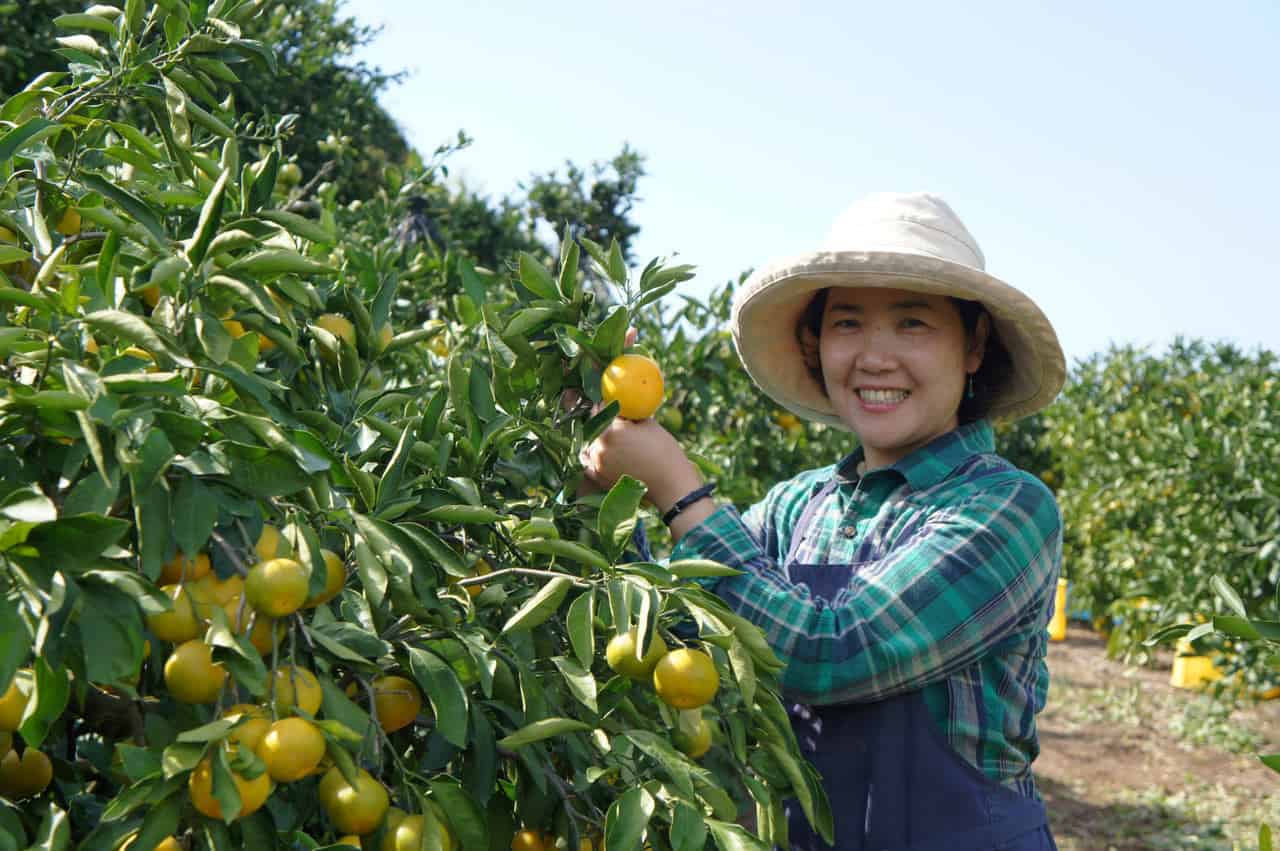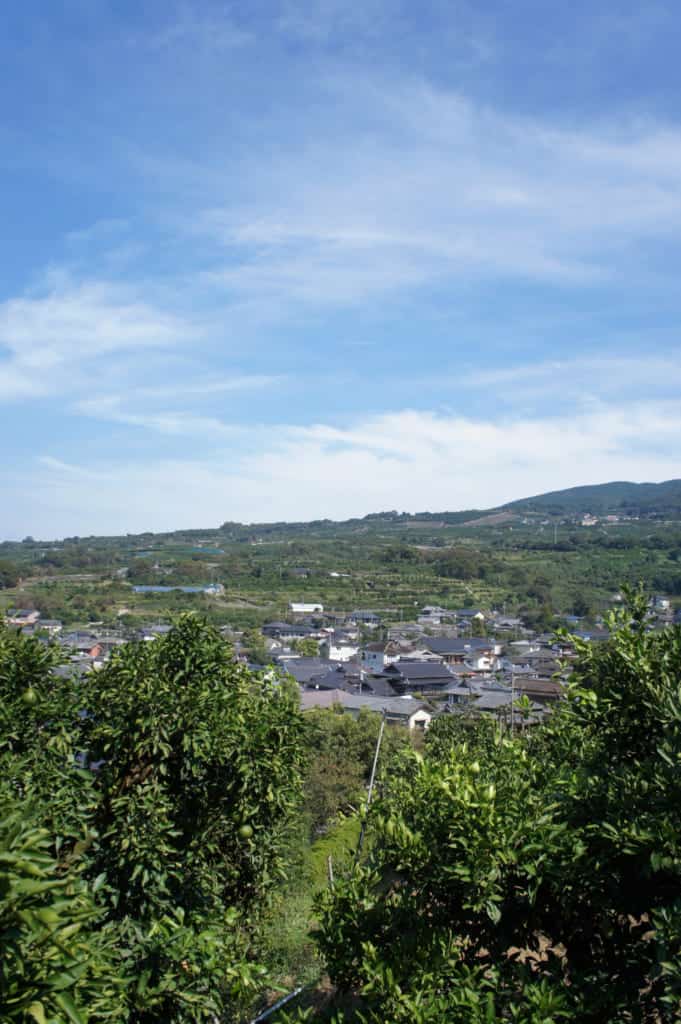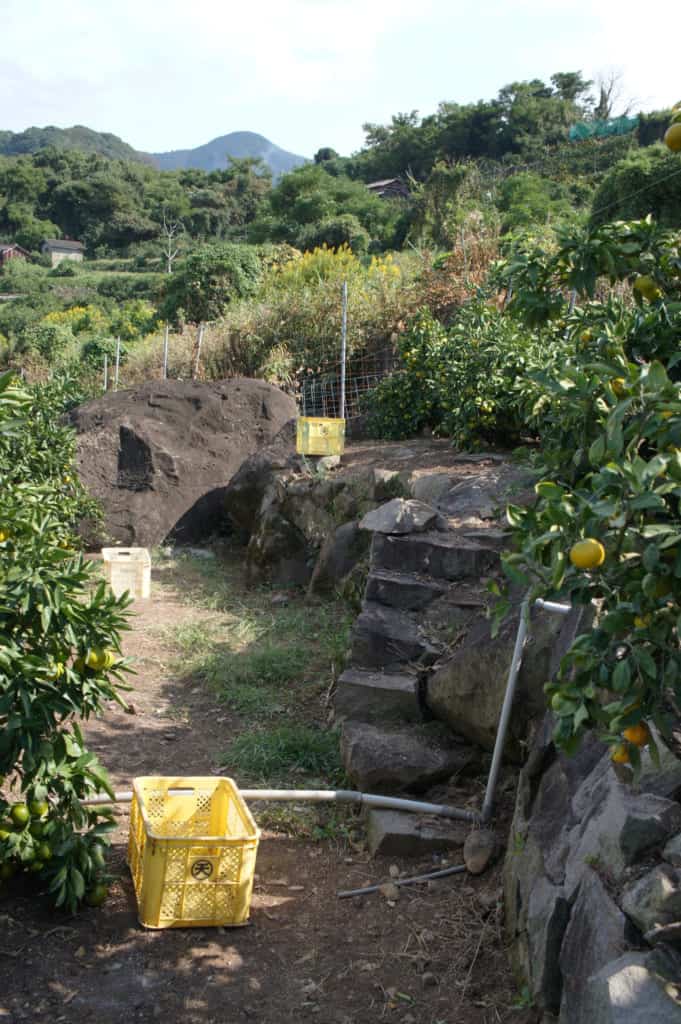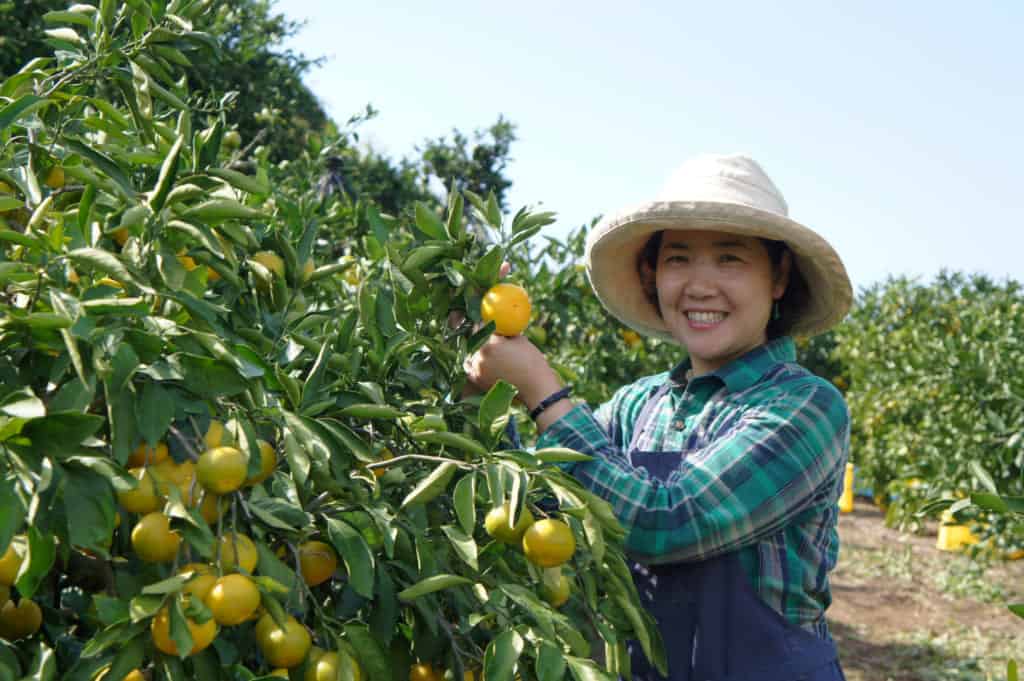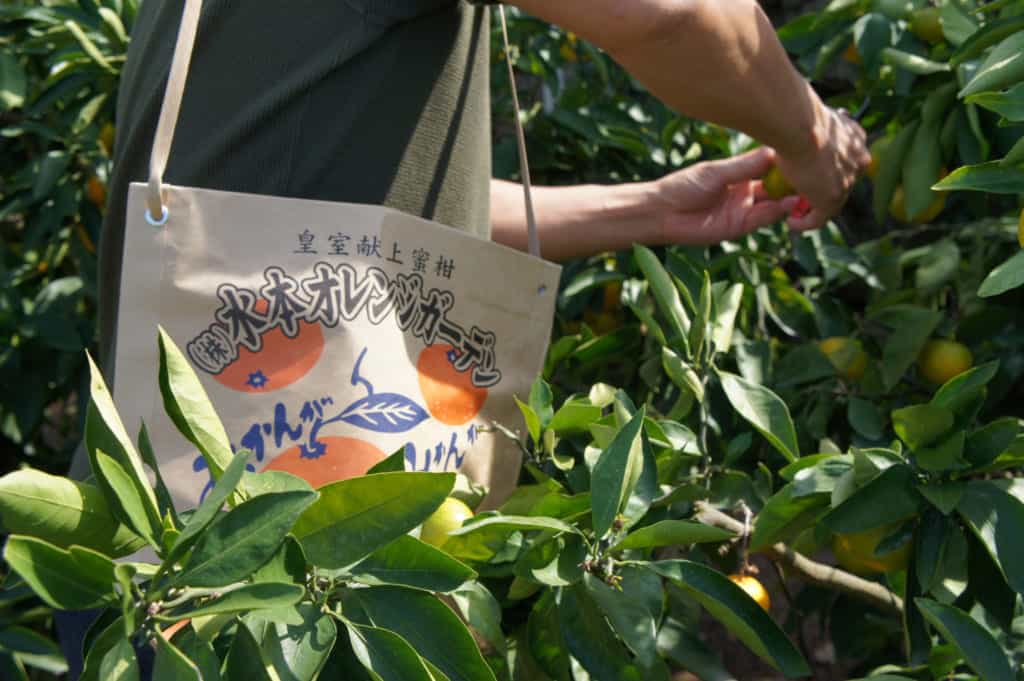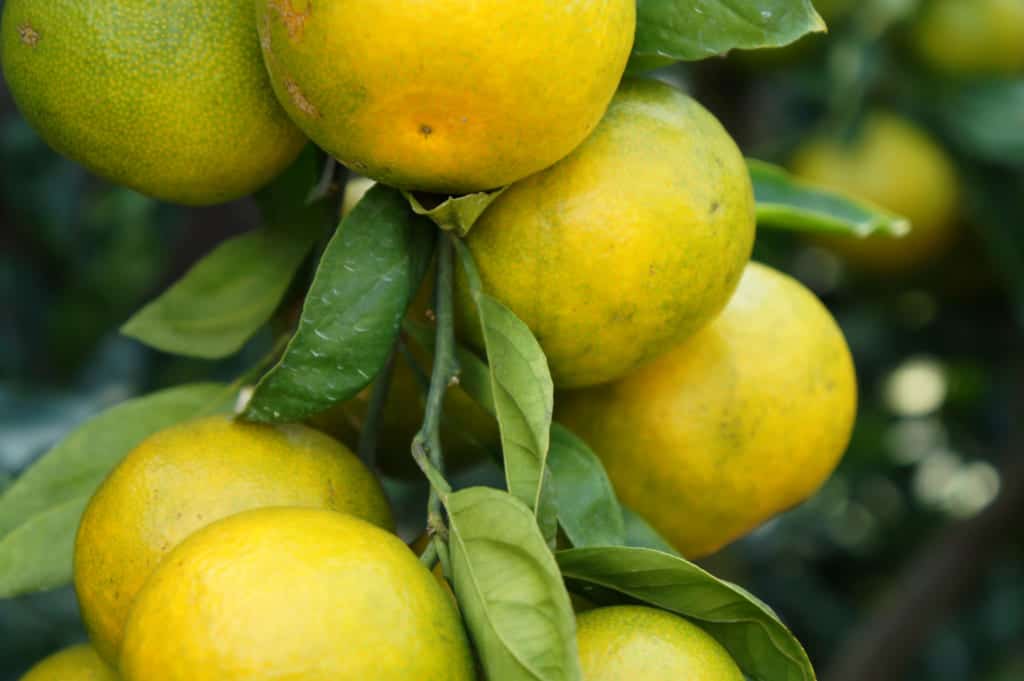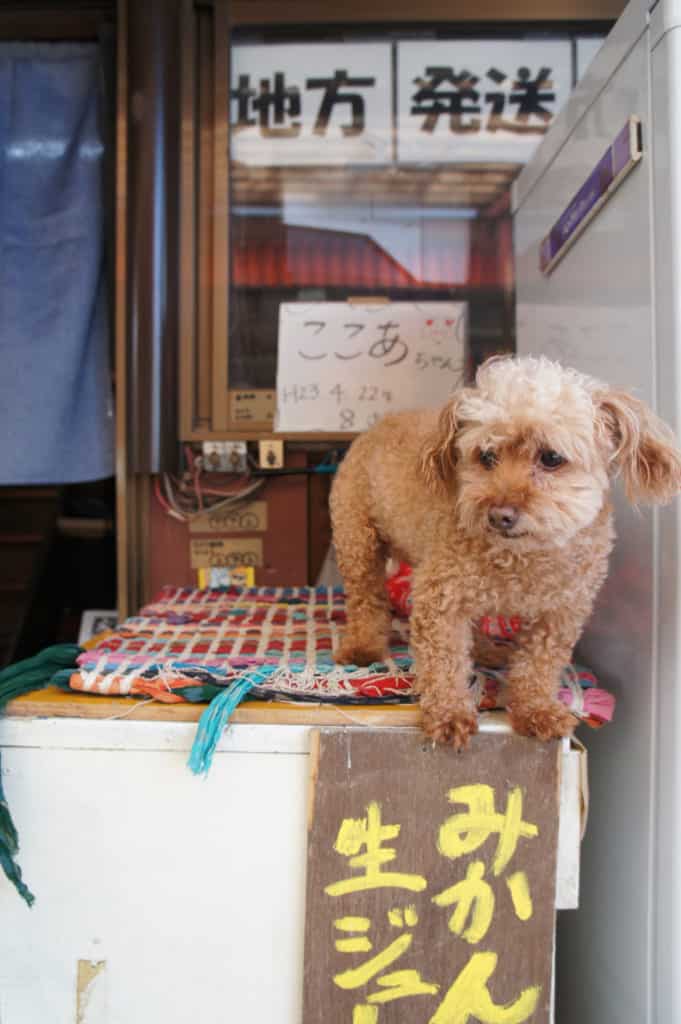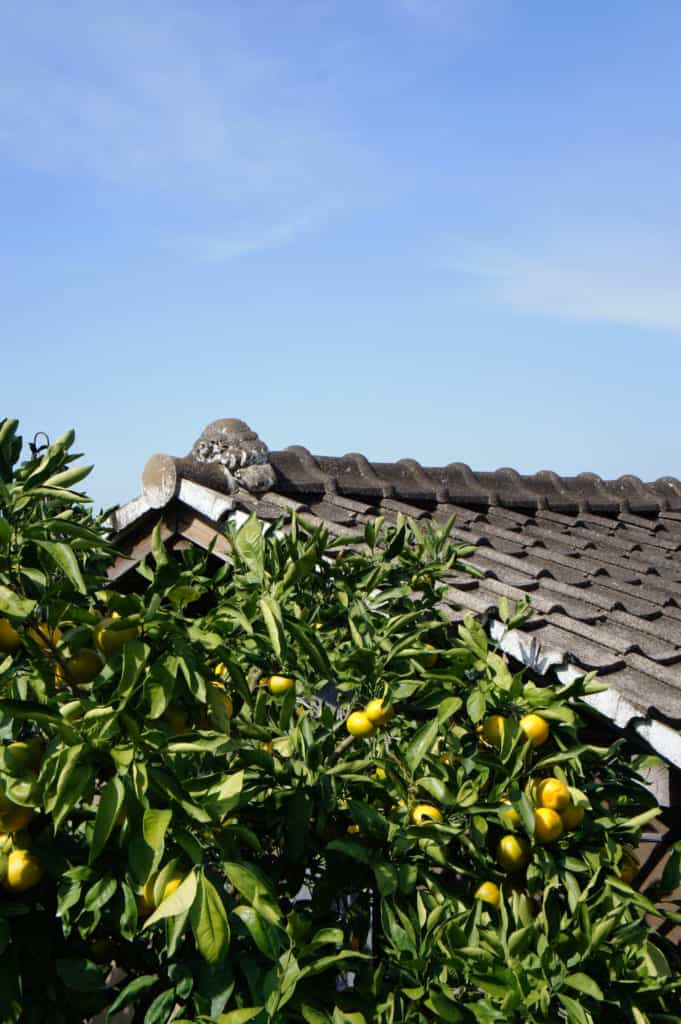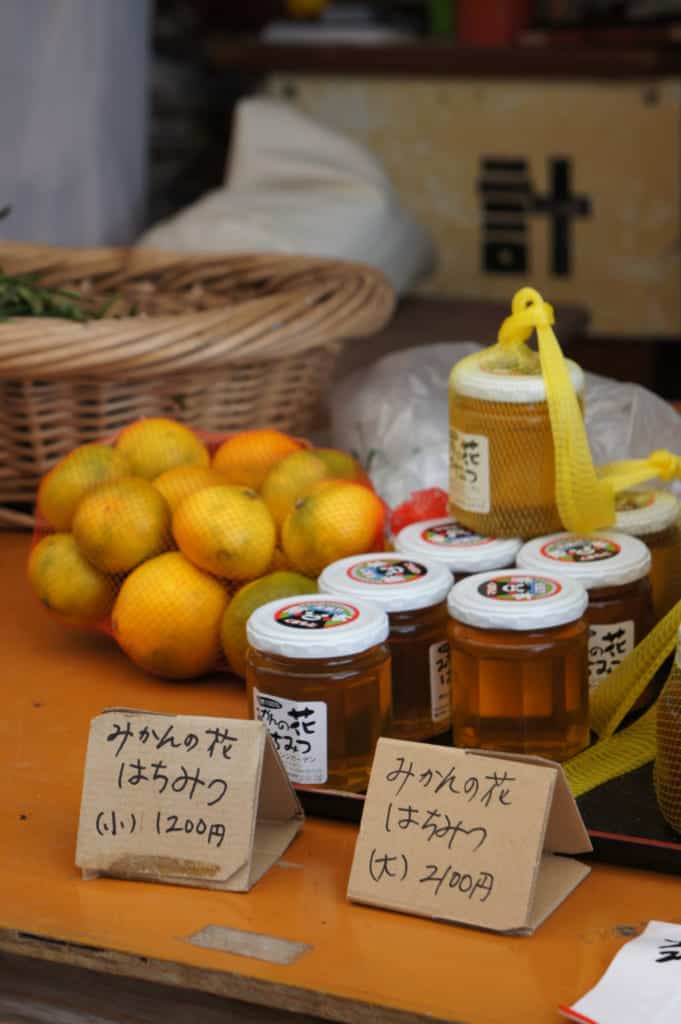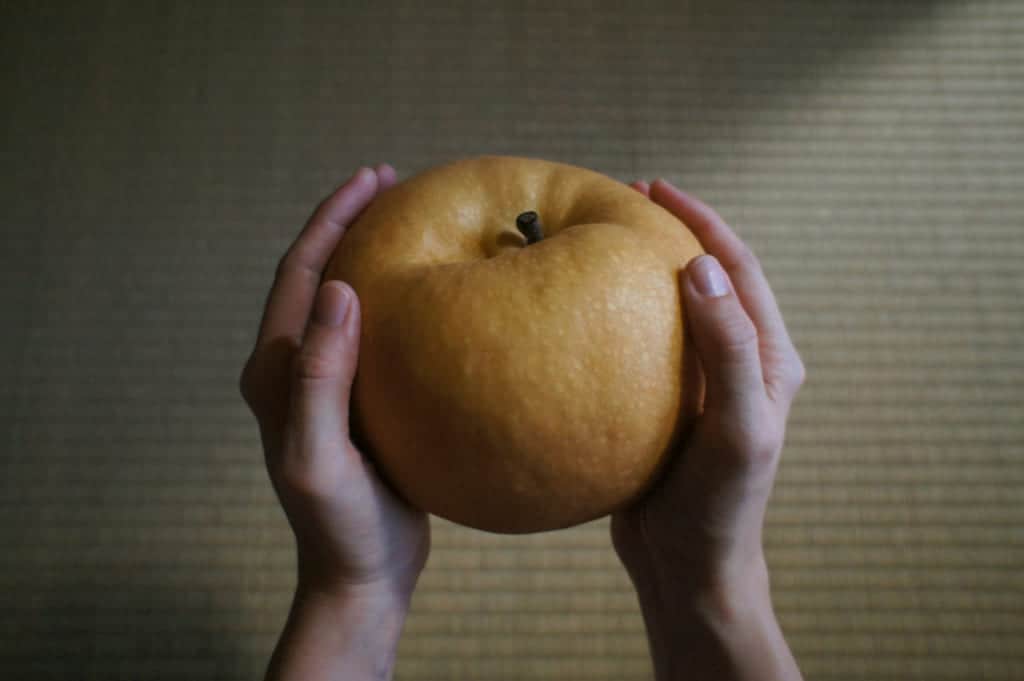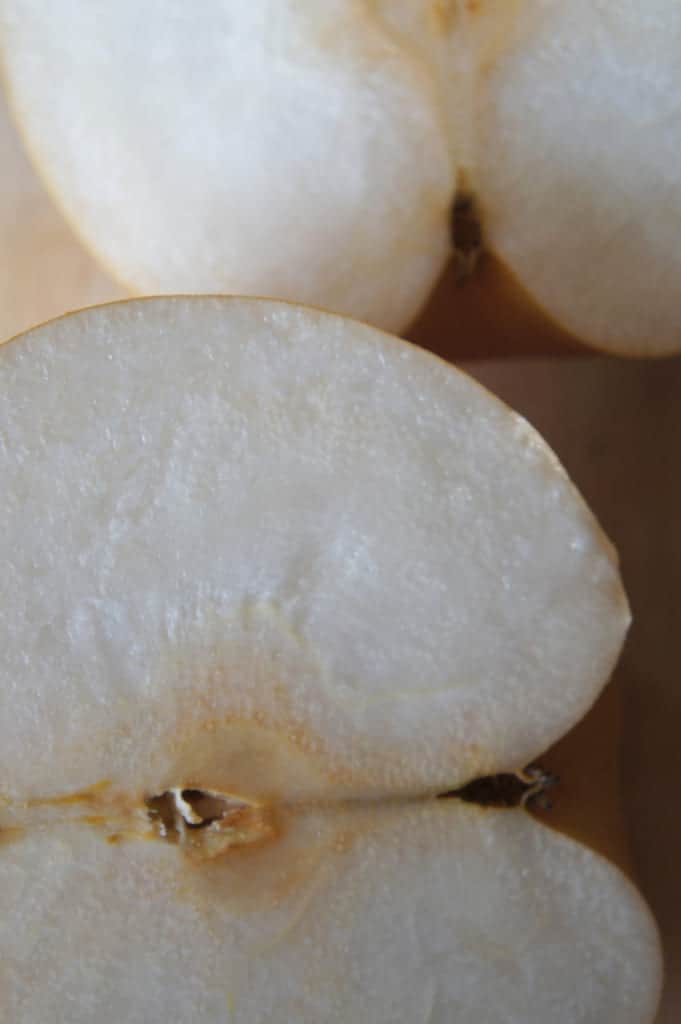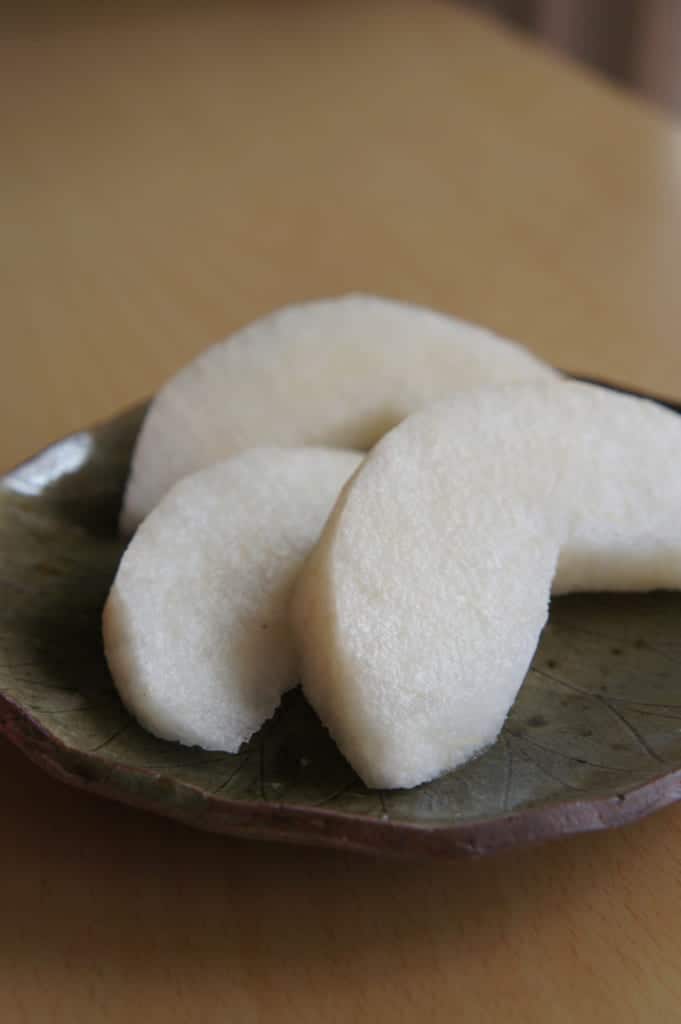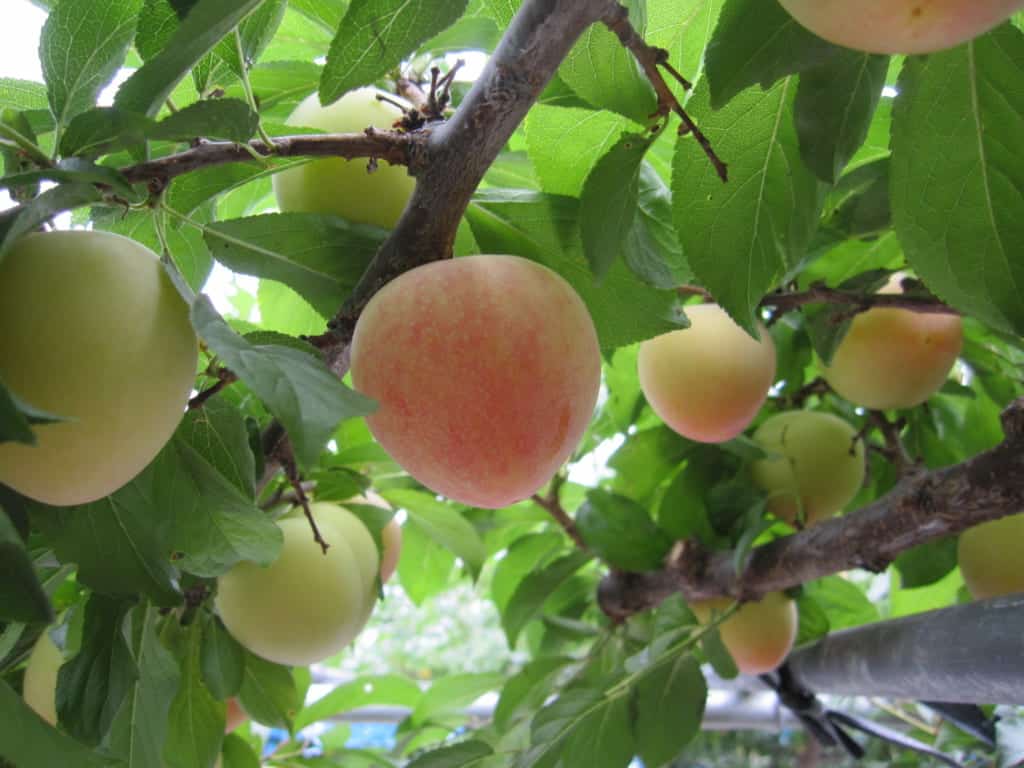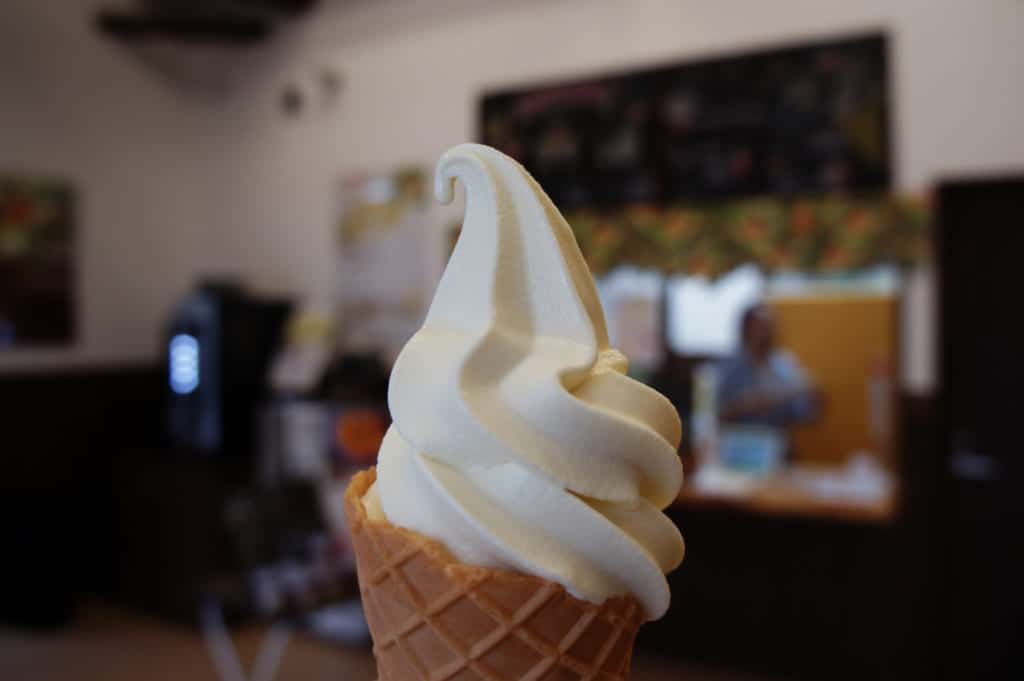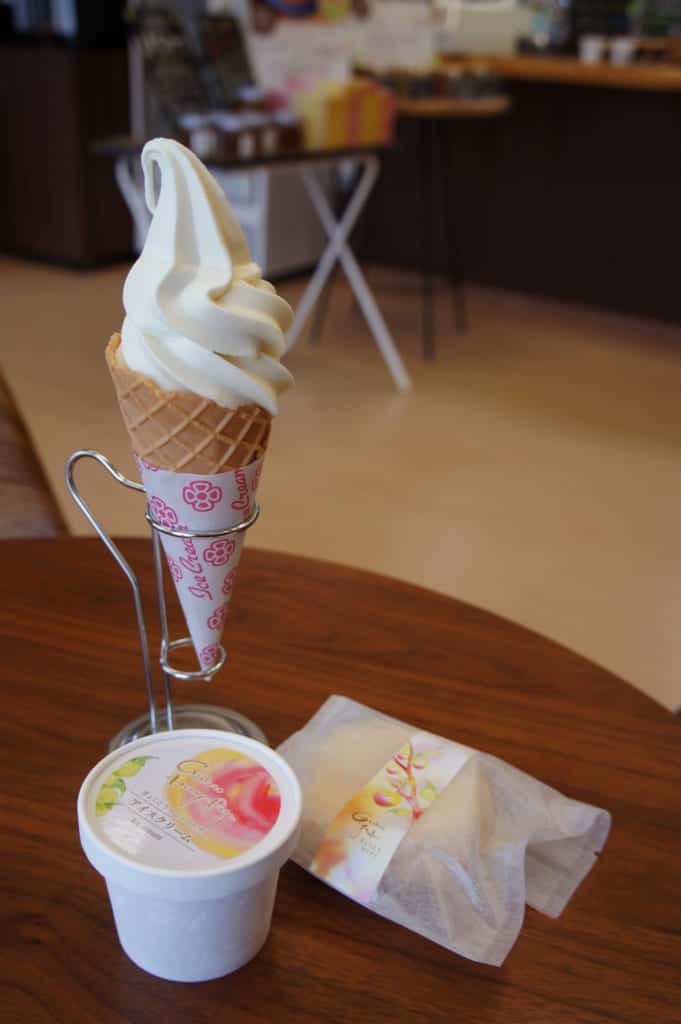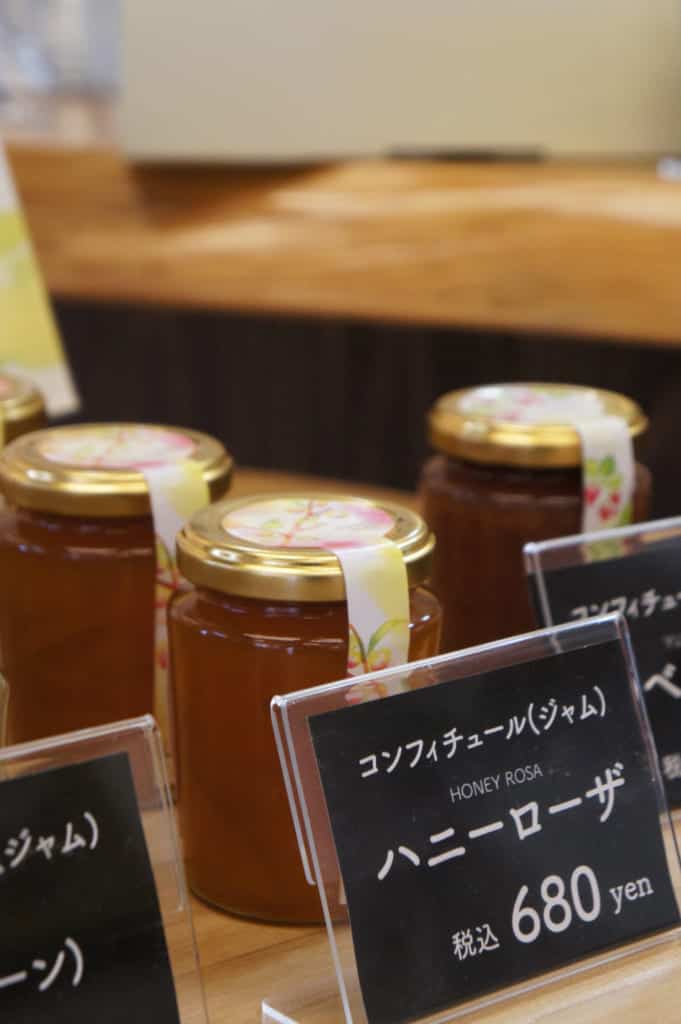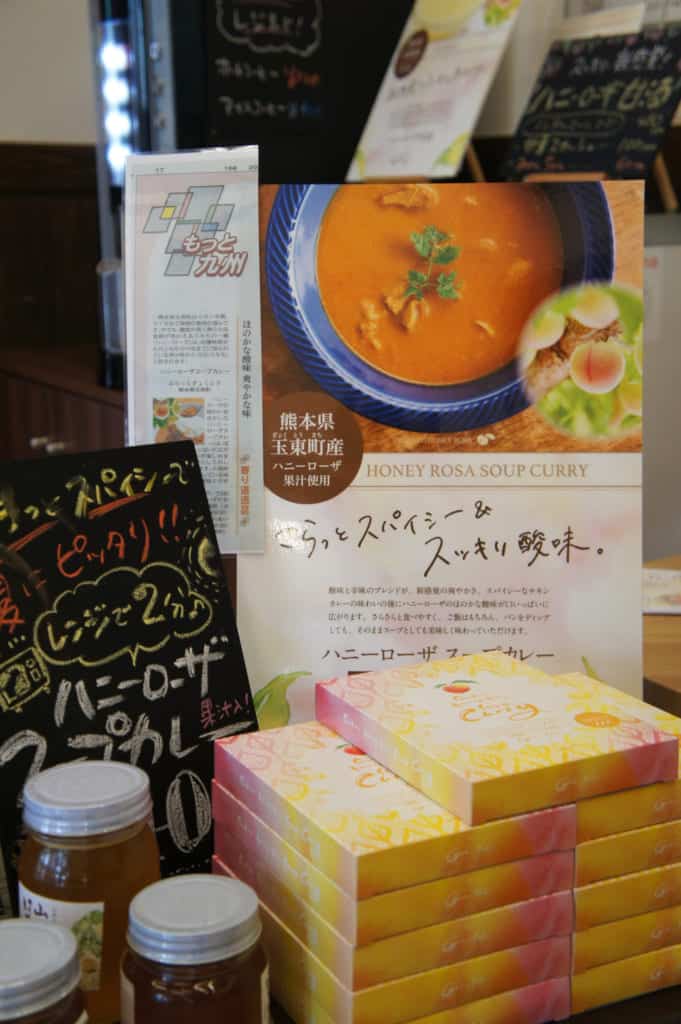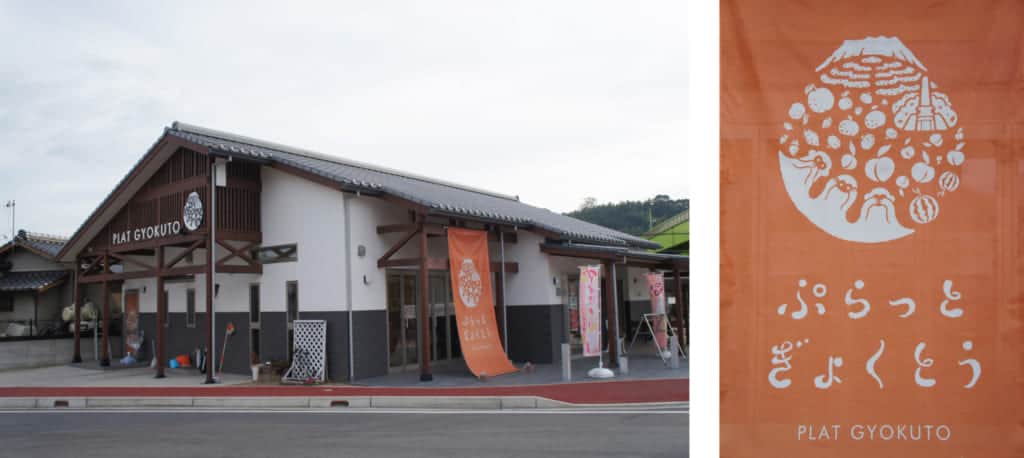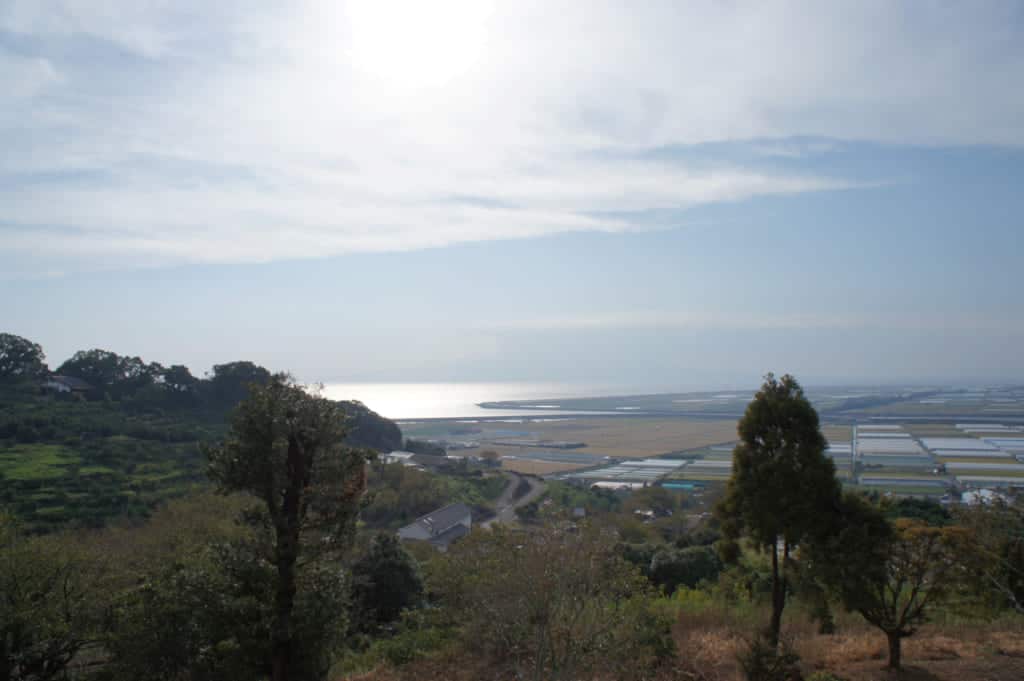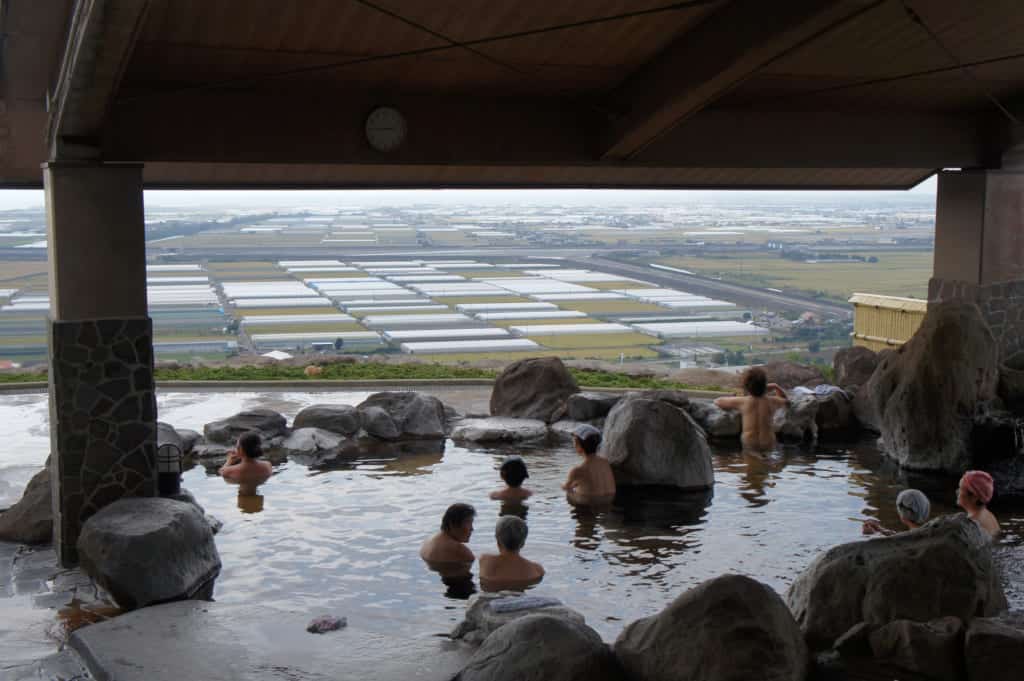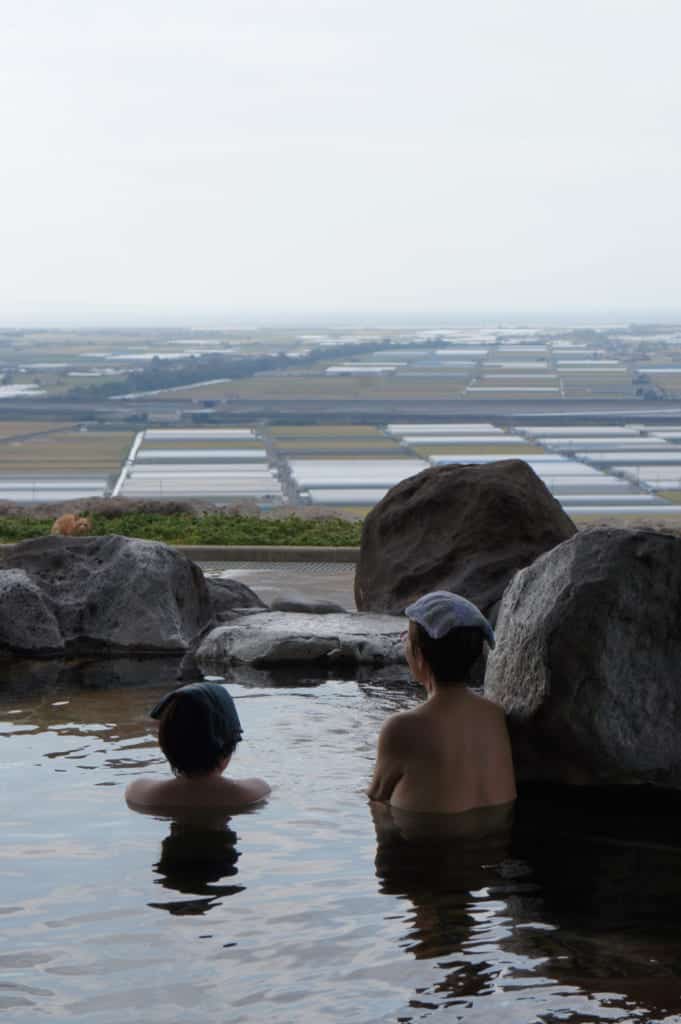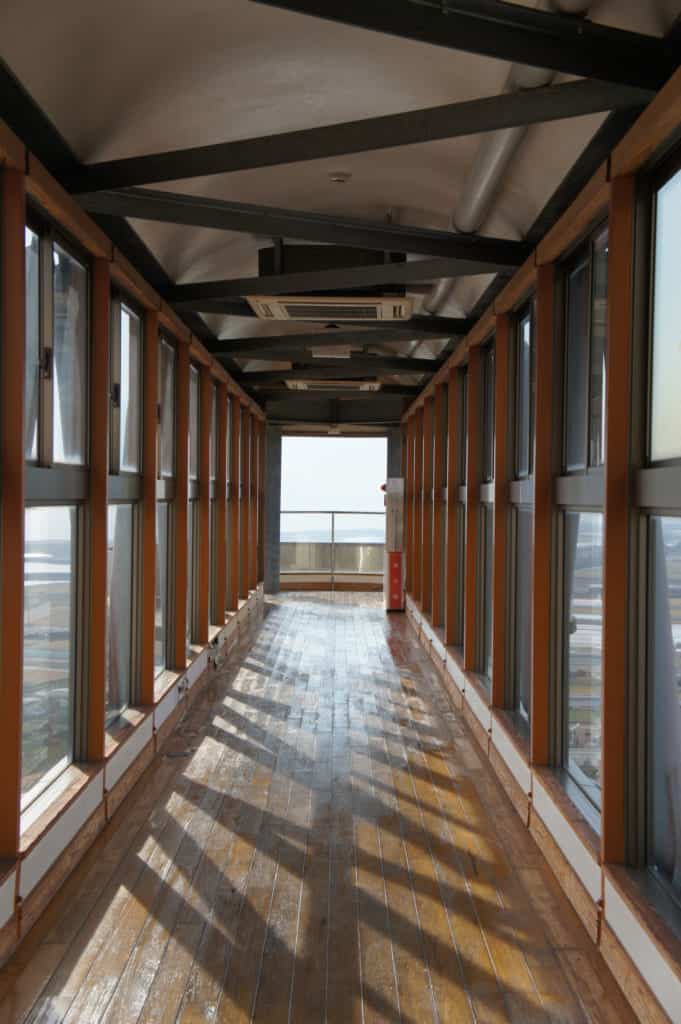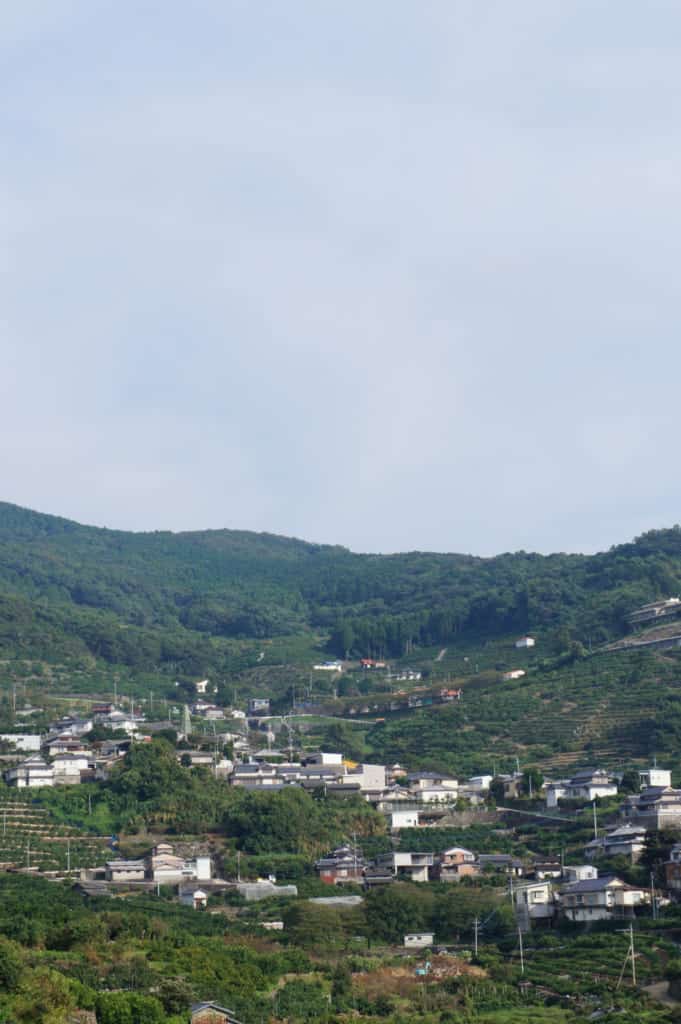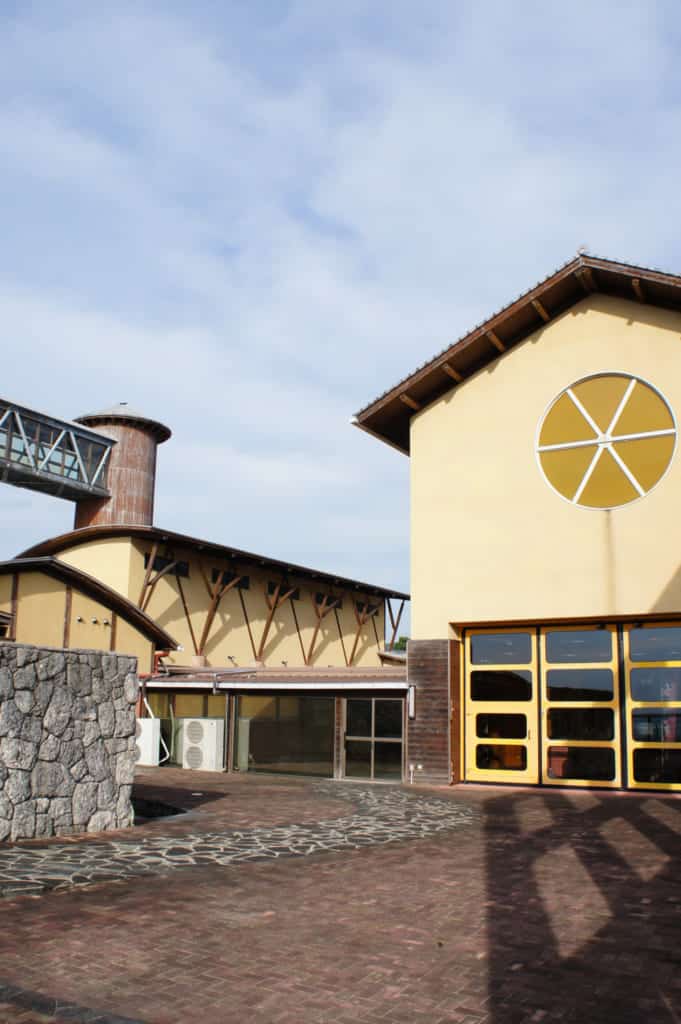sponsored by Northern Kumamoto Administrative Headquarters
Japanese fruits are famous for being as beautiful as they are delicious, and the local farmers’ care and attention to them are legendary. Diversity is another characteristic of Japanese fruits, and travelling through the country I am always surprised to discover new varieties.
I recently stayed in Northern Kumamoto, Kyushu island, and had the opportunity to try surprising fruits like a giant nashi (pear) and a honey-flavored Japanese plum. But my favourite types are citrus fruits and I was amazed when I saw the landscapes of Tamana, in Northern Kumamoto. The mountains there are literally covered with citrus trees.
Pick exceptional citrus fruit on a family farm
For orange and tangerine lovers, Japan is a top destination; no less than twenty types of mikan (Japanese tangerines) are cultivated here! In Tamana, you can even enter a real garden of Eden: the Mizumoto Orange Garden (水本オレンジガーデン). There, for 600 yen, you can pick your own fruits to purchase… all the while eating as much as you want!
Before you start picking fruit, a member of the Mizumoto family provides you with a cute paper bag and a pair of pruning shears, guides you to the part of the orchard where the fruits are ripe, and explains how to identify and pick ripe fruit. Then, you can enjoy freely the fruit and the scenery at your own pace.
As one of the family members explained to us, each tree produces fruit with a unique flavor. So the only way to find your favourite is to taste it!
Another tip they gave us is even more surprising: the wild boars of the area are animals which appreciate good taste. They mainly forage at their farm, cultivated by organic farming methods, and sniff out the best fruit! If you find a tree with lower branches that have been ransacked by a boar, its fruits are likely to be delicious.
Picking season runs from September to March, and the types of citrus that can be harvested varies month to month.
A fruit stand can be found at the entrance of the farm. It has a cute guard dog: Coco-chan, a toy poodle who enjoys being pet by the visitors. There, you can not only buy fruit, but also marmalades and a sweet, subtle-tasting orange blossom honey.
It is also possible to rent space at Mizumoto Orange Garden for a barbecue. The fee is 2,000 yen for adults and 1,500 yen for children; a family option is available for 6,700 yen for 3 to 4 people. Fees include the cost of various meats to barbeque.
Arao Jumbo Nashi: Kumamoto’s giant pear
Before visiting Northern Kumamoto Prefecture, I was already familiar with nashi, the Japanese pear shaped like an apple. But I never had heard of Arao’s “Jumbo Nashi”. This fruit lives up to its name, as it can weights up 2 kilos! The origin of the niitaka nashi (新高 — it’s real name) was the Arao area in the early Showa period (1926-1989) and the region remains one of its major production areas.
As I visited the area during the nashi season (which runs from the end of September to October), I couldn’t resist buying one to bring it back home and taste it. The fruit’s pulp was crunchy and juicy, just slightly sweet, everything you would expect from a good refreshing nashi. But this type is mainly unique for its size, which can be a fun way to share nashi with family and friends.
Honey Rosa: a Japanese plum with a taste of honey
provided by Northern Kumamoto Administrative Headquarters
Each fruit has its season, and we cannot enjoy citrus, pears and plums at the same period of the year. For the opportunity to taste a fresh Honey Rosa sumomo (Japanese plum), one needs to visit Gyokuto between the beginning and the middle of June. The picking season is incredibly short, only about ten days. But to extend the joy of the Honey Rosa year-round, part of the production is transformed into tasty jams, ice creams, and even curries.
Soft serve ice cream, ice cream, sherbet or monaka (crisp wafers filled with ice cream): there are many ways to enjoy Honey Rosa plum as ice cream. I personally chose the “soft cream” option.
I was so amazed by its strong honey taste that I asked the shop attendant if the ice cream was made with honey. But it was made with only fruit and milk — it’s no exaggeration to name this plum “honey”. This fruit really intrigued me with its sweet taste and I would now be happy to have the opportunity to return in June just to taste the fresh fruit!
You can taste a Honey Rosa ice cream in Plat Gyokuto shop (ぷらっとぎょくとう), just near Konoha station (木葉駅). Moreover, it only costs 300 yen, a bargain for a must-try dessert if you visit the area.
Hot spring with a view at Kusamakura Onsen
Close to Mizumoto Orange Garden, you can find an onsen, which is the perfect place for a relaxing end to the day, enjoying the beauty of the surrounding landscapes. Indeed, Tamana is not only blessed with fertile soil favourable to growing citrus, but also with natural hot springs. Oama hot springs owes part of its reputation to the author Natsume Soseki, who liked it and used it as the scenery of his novel The Three-Cornered World (original title: Kusamakura).
The bathhouse Kusamakura onsen Tensui (草枕温泉てんすい) made the most of both hot spring water and the surrounding nature. It is an onsen built with wide indoor and outdoor baths on the heights, overlooking the place where the mountains give way to an extensive plain, stretching to the Ariake sea. The panorama from the pool is breathtaking, the sunsets renowned. I could have spent hours in the rotemburo (outside bath), enjoying the view while soaking in this 100% natural water maintained at a perfect temperature.
Everything here reminds us that we are in an area famous for citrus: the rose window reminiscent of orange wedges, the tiled floor drawing of a mosaic stalk and leaves at the top of a small circular pool, and even the citrus-perfumed body soap.
Access and Practical Information
Although renting a car remains the most convenient way to visit Northern Kumamoto, these places can also be reached by bus.
You can find more information about this area on Tamana’s Tourism Board website (only in Japanese), and on the website of Kikuchi River Bassin – World Heritage.
Mizumoto Orange Garden
Going to Mizumoto Orange Garden takes about 40 minutes by car and 1 hour by bus from Kumamoto (Sakuramachi bus terminal) and about 1:30 by car and 2 hours to 2:30 by JR train and bus from Fukuoka.
The closest station is Tamana (玉名駅) and the closest bus stop Tensui Seimei Gakuen Mae (天水生命学園前).
You can find more information about Mizumoto Orange Garden on this website (only in Japanese) and find more precise information about prices on this page. Some of the Mizumoto family members can speak English and would be happy to welcome you.
Plat Gyokuto (Honey Rosa Japanese plum)
This shop is just a few steps away from Konoha station. To get there by train, it takes about 20 minutes from Kumamoto and 1:45 from Fukuoka, by car about 35 minutes from Kumamoto and 1:30 from Fukuoka.
You can find more information about Honey Rosa products on Plat Gyokuto’s website (only in Japanese).
Kusamakura onsen Tensui
To get to Kusamakura onsen Tensui bathhouse, it takes about 35 minutes by car and 1:25 by bus from Kumamoto. From Sakuramachi terminal, take a bus bound for Tamana and stop at Oama Onsen (小天温泉) or Kusamakura Onsen Tensui (草枕温泉てんすい) — only a few buses a day stops at this last one. From Fukuoka, it takes about 1:35 by car and 2:20 by JR train and bus. The closest station is Tamana (玉名駅).
From Mizumoto Orange Garden, it takes only 4 minutes by car or a bit less than 20 minutes by walk.
You can find information about water characteristics and fees concerning Kusamakura onsen Tensui on this page (only in Japanese).
Access to Tamana From Other Areas
From Fukuoka Airport: about an 1 hours and 10 minutes by car
From Oita Airport: about an 2 hours and 30 minutes by car
From Kumamoto Airport: about 50 minutes by car


